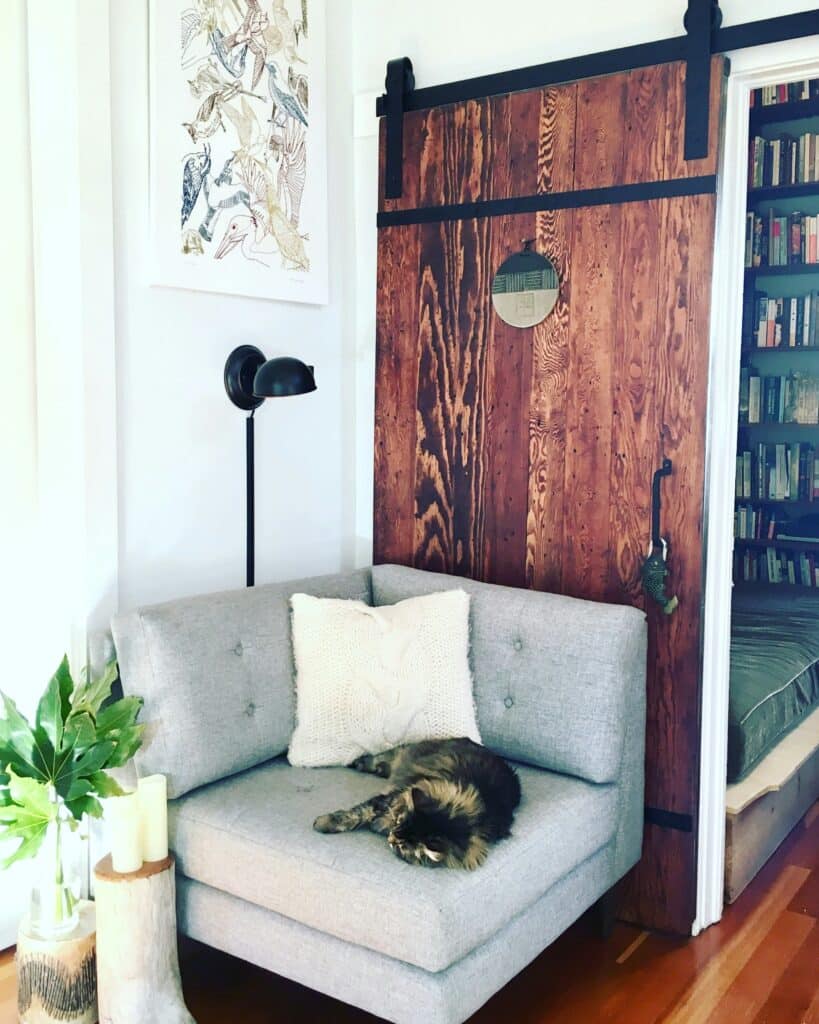We find ourselves facing an interesting paradox; on one hand, we have an abundance of goods, supplies, and personal items and on the other, a limited spatial canvas to arrange these possessions. How do we strike a balance? The answer lies in finding creative, practical ways to repurpose everyday items, thus maximizing efficiency. So, let’s dive into this intriguing journey of making the most out of minimal spaces.

At first glance, you might think that a small living space restricts your lifestyle. But the truth can be quite the opposite. If done right, it can provide an opportunity to simplify your life, getting rid of the unnecessary and focusing only on the essentials. It gives you a chance to test your innovative skills, and discover space-saving solutions that offer maximum efficiency. 🤓
The Ingenious Art of Repurposing
When we talk about repurposing, we’re not just referring to the basic idea of ‘recycling’. Repurposing goes beyond recycling – it’s about rethinking, redesigning, and reclaiming items to serve new, often unexpected uses. It’s about giving a second life to everyday objects, whether they’re kitchen utensils, furniture, old ladders, or mason jars, in a way that not only solves your space problem, but also adds a touch of your personal style to your home.
Not only does repurposing allow you to make the most out of small spaces, but it also encourages sustainability. By reusing items, you’re reducing waste and contributing to a more sustainable lifestyle. But more importantly, it empowers you to become an active participant in the designing process of your own living environment. 👍
Discovering New Horizons in Small Spaces
The reality is that small spaces can hold more than what meets the eye. The key is to make every inch count. We’ll explore numerous ways to achieve this, from utilizing vertical spaces, employing multipurpose furniture, to creating hidden storage. We’ll look at different rooms in your house and discover how to maximize their potential. Our objective is to help you see your small space in a whole new light and equip you with clever, practical solutions to make your life easier and your living space more enjoyable.
We’ll also discuss the importance of maintaining balance while repurposing items. While the goal is to maximize efficiency, we also need to ensure that the space remains functional and aesthetically pleasing. We want our small spaces to be cozy, not cluttered. Therefore, we’ll share tips on how to achieve this balance, ensuring your small space is efficient, yet comfortable and inviting. 😊
Conclusion
As we embark on this journey of space-saving solutions and repurposing everyday items, we’re not only aiming for maximum efficiency in small spaces. We’re also striving to spark creativity, encourage sustainable living, and, ultimately, improve our quality of life. So, whether you live in a small apartment, a tiny house, or just want to make the most of a specific room in your house, buckle up for an enlightening journey full of useful insights and practical tips.
Stay with us as we delve deeper into the intriguing world of repurposing and discover how to transform your small space into a functional, beautiful, and efficient living environment. 😉
Transform Your Space: Ingenious Solutions for Small Living Areas
As urban living spaces continue to shrink, many of us are grappling with the challenge of fitting our lives into smaller apartments and homes. But fear not, small space dwellers! With a little creativity and resourcefulness, you can maximize your space and make every square foot count. In this article, we’ll explore clever ways to repurpose everyday items for maximum efficiency in small spaces. Let’s dive in! 🏠
Firstly, we’ll cover various methods to repurpose items for storage, followed by unique ways to use everyday items for space-saving furniture. Lastly, we’ll delve into how to make the most of your wall space. So whether you’re moving into a tiny apartment or just looking to declutter your existing space, these tips will help you create a well-organized and efficient home.
Remember, the key is to think outside the box and reimagine the function of ordinary objects. So, grab a cup of coffee ☕, and let’s get started on our journey to a spacious and comfortable living environment.
Storage Solution Wonders: Repurpose Items for Extra Space
Many everyday items can double as storage solutions when used creatively. These ingenious hacks not only help you declutter your space but also add a personalized touch to your home decor. Let’s take a look at some of these ingenious storage solutions:
Cake stands: Who knew these adorable dessert displays could double as a multi-tier storage solution? A cake stand can hold small items like jewelry, cosmetics, or spices, keeping your counter clean and organized. You can even stack a few stands for more storage space. Check out this video on YouTube by “ClutterBug” to see this clever hack in action!
Mason jars: These versatile containers can be used for more than just canning. Use them to store small items like buttons, screws, or office supplies. You can even use mason jars to create a vertical garden in your small balcony or kitchen. The possibilities are endless!
Shoe organizers: Hang a shoe organizer behind your bathroom or pantry door to hold toiletries, cleaning supplies, or food items. This simple hack can save you a lot of shelf space and keep your essentials within easy reach.
These are just a few examples of how you can repurpose everyday items for storage. Remember, the key is to get creative and make the most of what you have. Now, let’s move on to furniture solutions for small spaces.
Furniture Solutions: Multipurpose Items for the Win!
When space is at a premium, furniture that can serve multiple purposes is a godsend. These clever furniture hacks not only save space but also make your home more functional and comfortable. Let’s explore some of these space-saving wonders:
Ottoman with storage: An ottoman can serve as a footrest, extra seating, and a coffee table. But did you know that it can also provide ample storage? Many ottomans come with a removable top, revealing a spacious interior that can hold blankets, books, toys, and more. Check out this video by “EngineerYourSpace” on YouTube to see how you can make your own DIY storage ottoman.
Convertible furniture: Convertible furniture like sofa beds, murphy beds, and extendable tables can transform one living space into another in seconds. They’re perfect for studio apartments or homes with open floor plans.
Bookshelves: Bookshelves are not just for books anymore. They can double as room dividers, providing privacy and creating separate living spaces. You can also use bookshelves to display plants, artwork, and other decor items.
Maximize Your Wall Space: The Sky’s the Limit!
Walls offer a wealth of space-saving opportunities if used wisely. From vertical gardens to fold-down desks, the possibilities are truly endless. Let’s look at some ways to make the most of your wall space:
Vertical gardening: If you’re a plant lover living in a small space, vertical gardening is your best friend. Use wall-mounted planters or hanging pots to create a lush, green wall that not only saves space but also improves air quality. Check out this video by “Epic Gardening” on YouTube for some vertical garden inspiration.
Fold-down desks: A fold-down desk can transform any wall into a functional workspace. When not in use, simply fold it up to free up floor space. This is a perfect solution for those working or studying from home.
Wall-mounted shelves: Floating shelves can hold books, plants, and decor items without taking up floor space. You can also use them in the kitchen to store dishes and spices.
In conclusion, living in a small space doesn’t mean you have to compromise on comfort or functionality. With a little creativity, you can transform everyday items into ingenious space-saving solutions. So, don’t let limited space cramp your style. Embrace the challenge and create a home that’s uniquely yours. Happy decorating! 🏡
Conclusion
In wrapping up this comprehensive exploration into the intricacies of IT and engineering, we have traversed a diverse array of technical concepts, each fundamental to understanding the multifaceted world of these disciplines. We kicked off with a deep dive into software engineering, uncovering its myriad of facets, its essence, and its application in real-world scenarios. We dissected the mechanisms behind various software development models, their principles, benefits, and possible pitfalls. 💻👨💻
We then transitioned into a thorough discussion on IT, exploring the role and significance of information technology in today’s fast-paced, digitally-driven world. We examined the basic IT infrastructure, delved into cloud computing, discussed cybersecurity and data management, and even glanced at the future trends in IT. ☁️🔒
Along the way, we have also touched on the importance of technical writing in both fields. This skill is vital for effectively communicating complex ideas and instructions in a way that is clear, concise, and user-friendly. We explored the best practices for technical writing, the role it plays in software documentation, and the qualities that make a great technical writer. 📝📘
The realm of IT and engineering is expansive and ever-evolving. These disciplines are the lifeblood of modern innovation and progress, driving advances in virtually every field imaginable. As such, it is crucial to stay informed and updated, continually seeking to expand our understanding and knowledge. 🧠🌍
By now, you should have a firm grasp of the concepts presented in this article, their relevance, and their implications. However, the learning shouldn’t stop here. I encourage you to delve deeper, to research further, to question, to ponder, and to challenge these ideas. Your curiosity and critical thinking are key to unlocking greater depths of understanding. 🤔🔬
With this in mind, I have provided a collection of valuable resources to aid your ongoing exploration. These include the latest research studies, comprehensive guides, and informative articles, all from reliable and credible sources.
[LINK: Comprehensive Guide to Software Engineering](https://www.example.com)
[LINK: Exploring the World of IT](https://www.example.com)
[LINK: The Art of Technical Writing](https://www.example.com)
I hope this article has been enlightening and has sparked your curiosity to learn more. If it has, I would greatly appreciate it if you could share it with others who might find it valuable. I also welcome your thoughts, questions, or feedback on this article. Feel free to drop a comment below or get in touch with me. I am always happy to engage in stimulating technical discussions.👥📬
Thank you for your time, and remember, keep exploring, keep learning, and keep pushing the boundaries of your knowledge. Your journey in IT and engineering is just beginning. Let’s embrace the challenges and rewards that lie ahead together. 🚀🌟
[HTML TAG: END OF ARTICLE]



